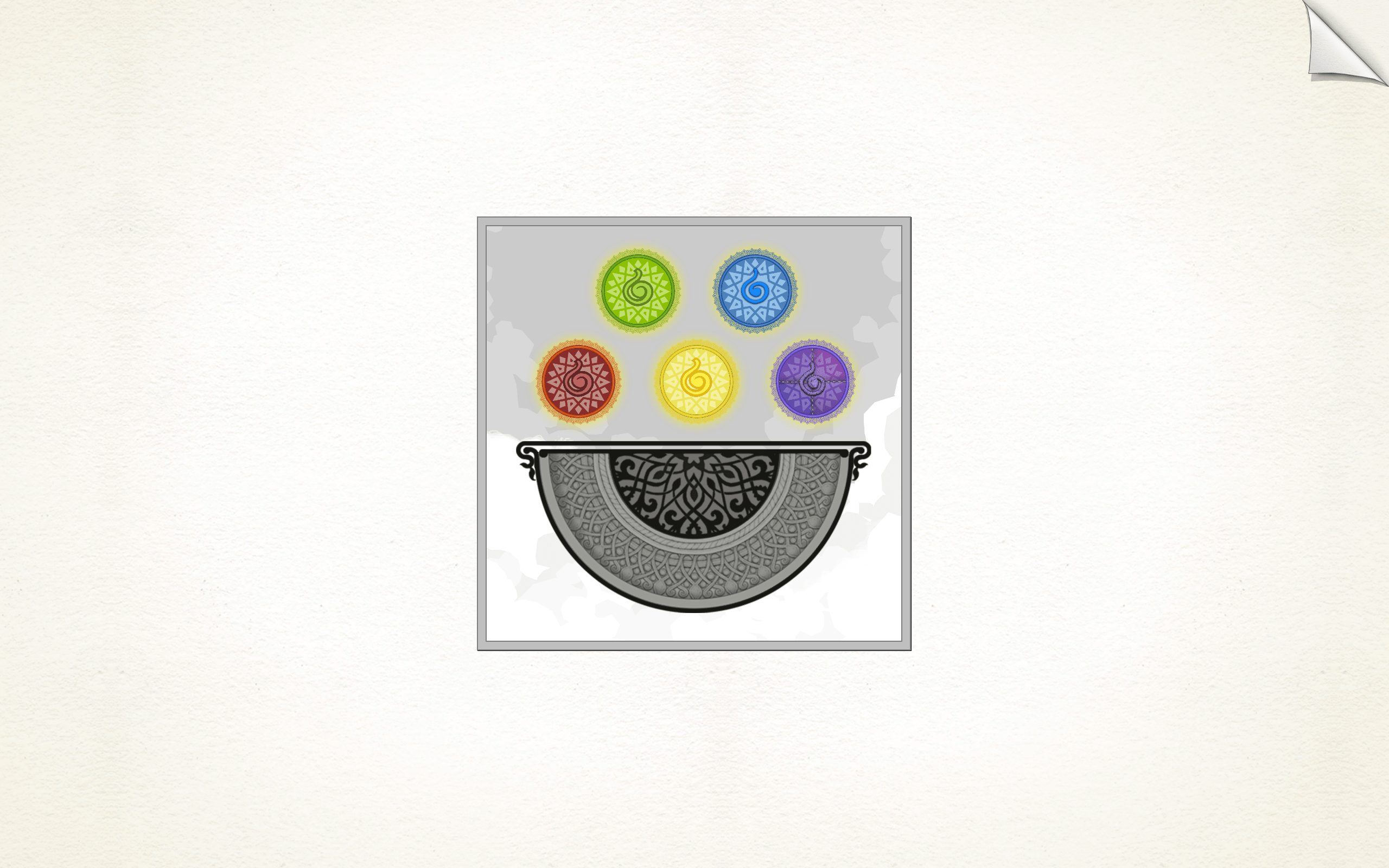The game I did for this Critical Play is Gorogoa. It was designed by Jason Roberts and published by Annapurna Interactive in December 2017. It’s available on Microsoft Windows, Nintendo Switch, and iOS. I played it via Steam on iOS.
The intended audience are those who enjoy solving out-of-the-box puzzles without reading too long sentences. I fit in this category, so it’s a great pleasure playing this game. The puzzle design in this game is very unique. As the screenshots shown below, the entire game consists of the interactions of four smaller grids, where each of them has something happening, and the players can drag them or combine them to help the main character move around to fulfil his goal.
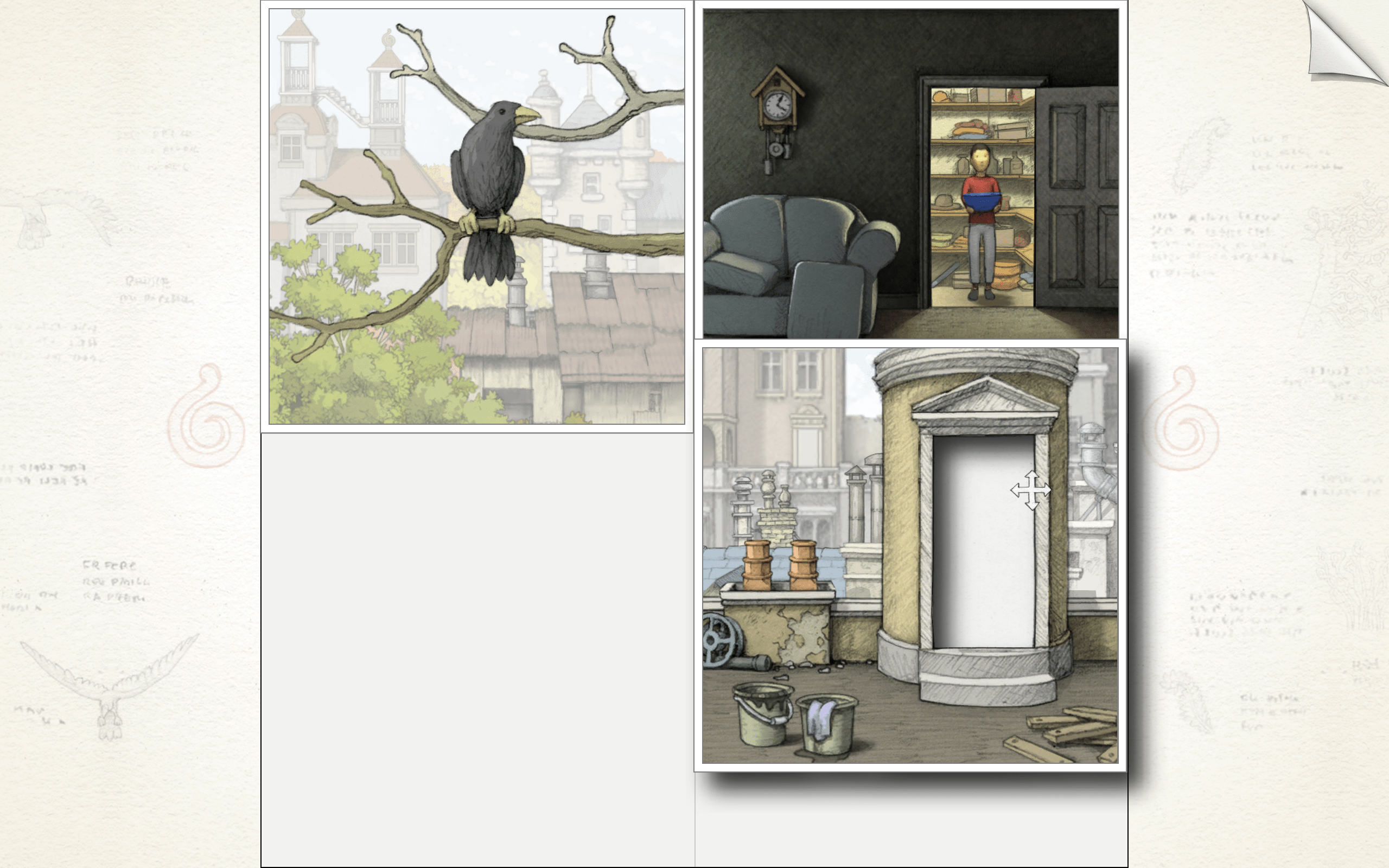

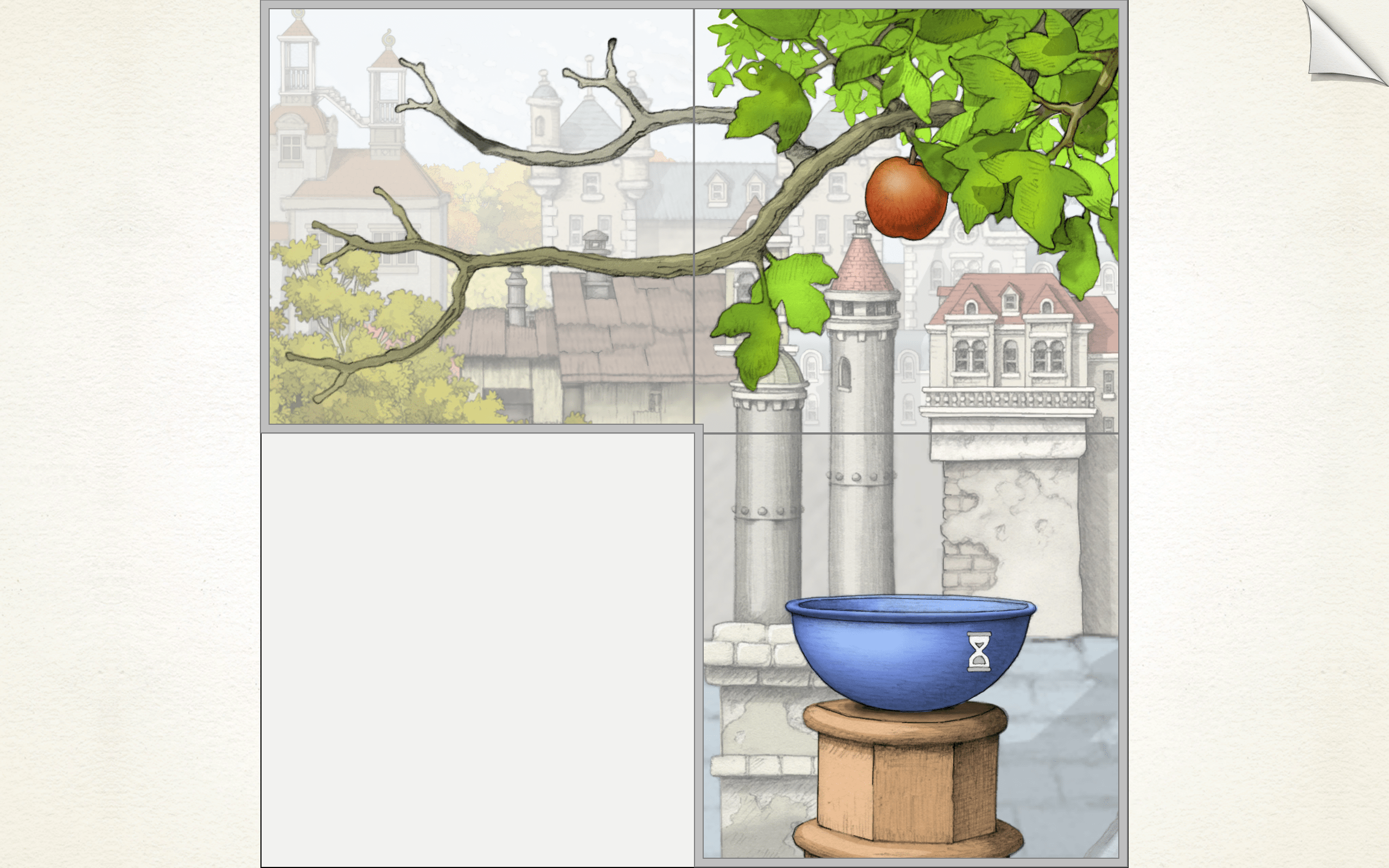
The first image above is an example of how the dragging looks like. It is obvious to the players that this is an “dragging” action.
The second image above shows an example of combining two grids.
The third image above shows the effect of combining two or more grids. The crow flies away, making some turbulences on the branch, making the apple to fall into the blue bowl below. This is exactly how the player collects the first fruit.
I don’t think there is a hard age constraint, but probably 14+ to be able to solve all the puzzles, and 20+ to understand the deeper storyline buried in the puzzles.
Puzzle-wise, I don’t think there’re any flaws. In fact, the puzzles and the mechanics fit pretty well in Gorogoa. The mechanics of the game is just to drag, zoom in, or zoom out each of the smaller grids, to collect the 5 fruits. Each fruit has its deeper meaning, and the puzzles also reflect the meaning too.

This is an example showing the puzzle which wants to light up the lamp. The background of the upper left grid has a very bright start, implying that the player needs to move the lamp to another grid, so that the player could then overlap the lamp and the star to light it up. This implies that the player needs to change the weight of the two cans on both sides of the seesaw, to slide the lamp rightwards. Two simple grids can contain so much information.
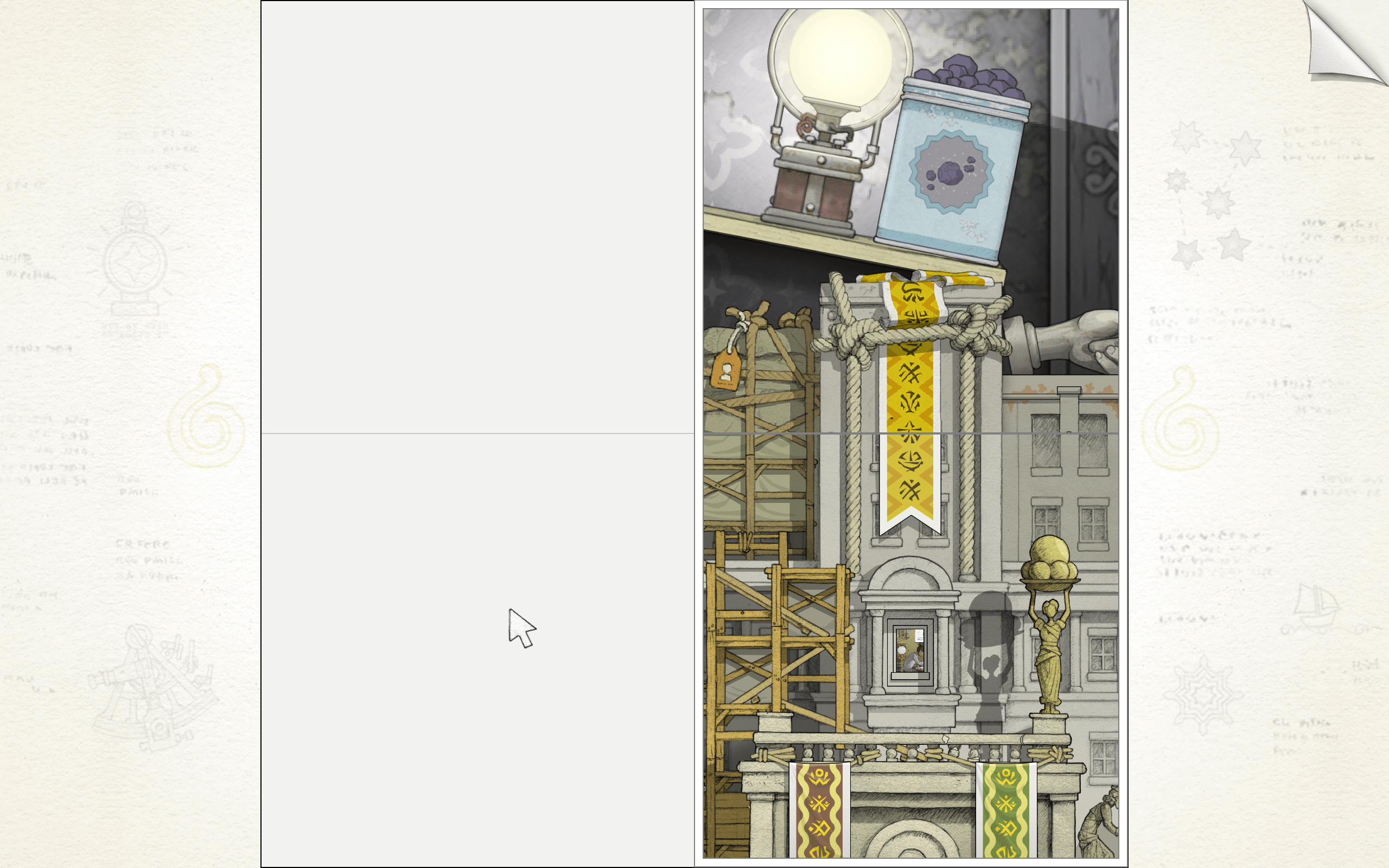
The scenes are also re-usable. From the previous puzzle, the player changed the right-hand-side of the seesaw to be coals. It gradually drops off goals, which can have other usages.
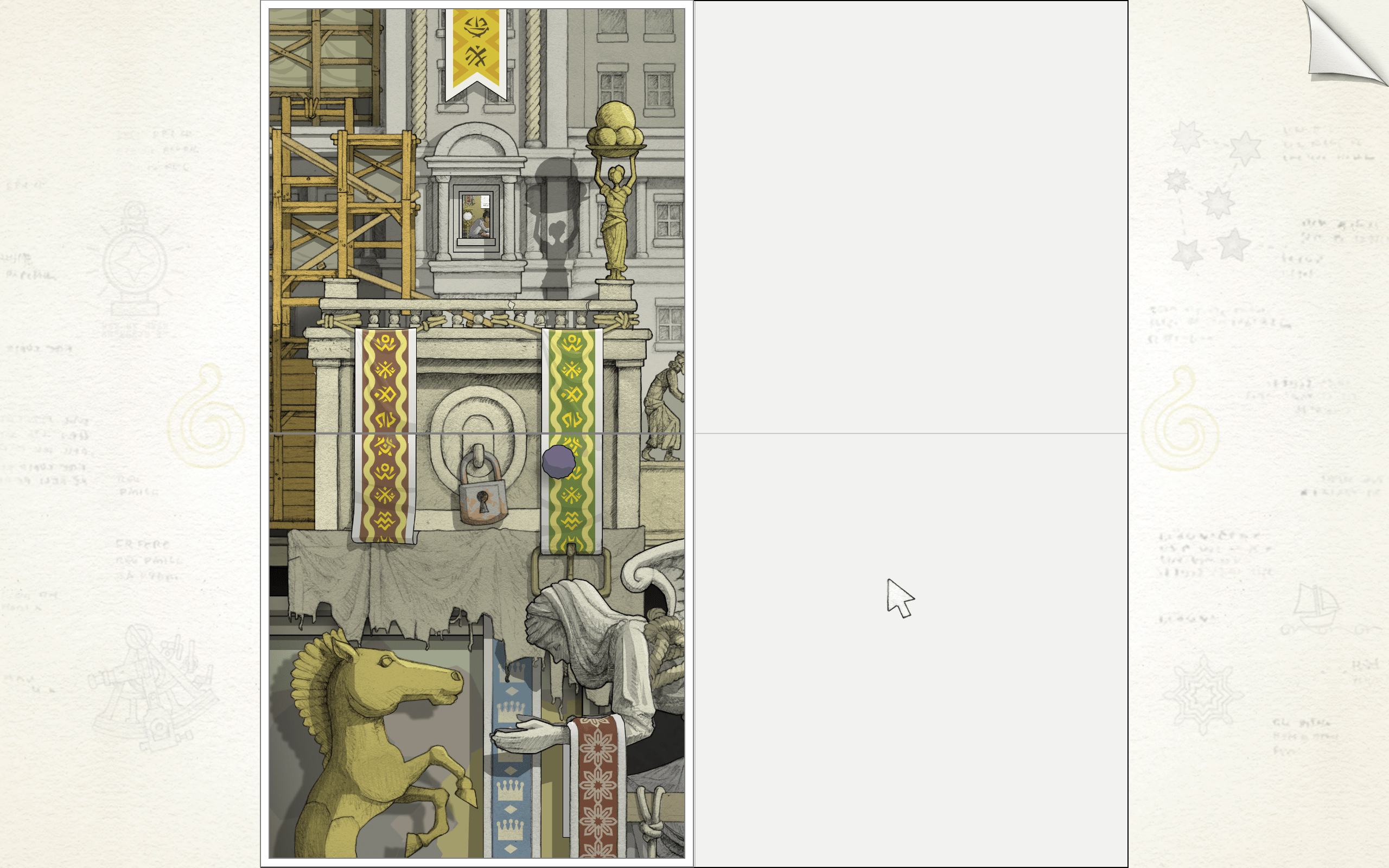
The player also needs to be fast in switching the combinations. The dropped coal in the previous image needs to fall into this image for later usage.
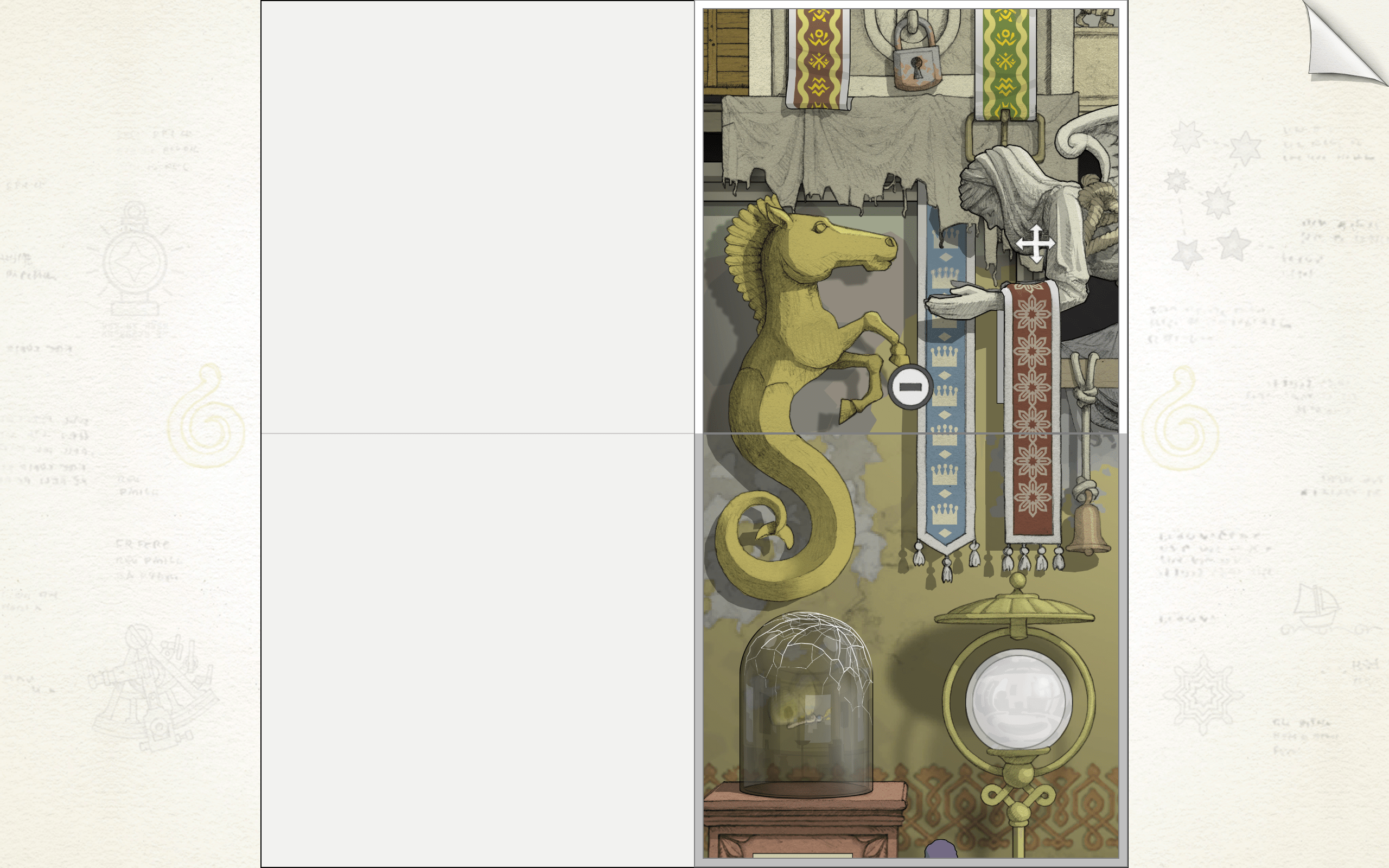
This is the very last step of the falling coal. The coal is used to smash the glass, which constrains the butterfly.
Only with this mechanics, the puzzle can be designed this way. The player can have different trials to connect and combine different parts of the four grids.
In short, the game designer has developed the puzzles in such a clever way that it seems there cannot be any other mechanics able to support them.
Another very clever decision by the game designer is the how to render the hints.
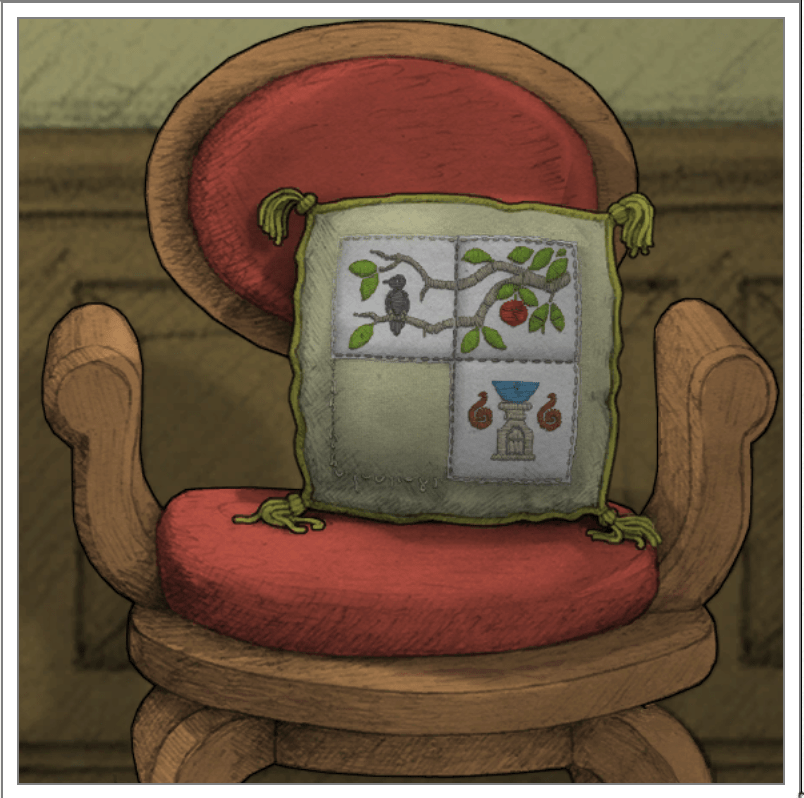
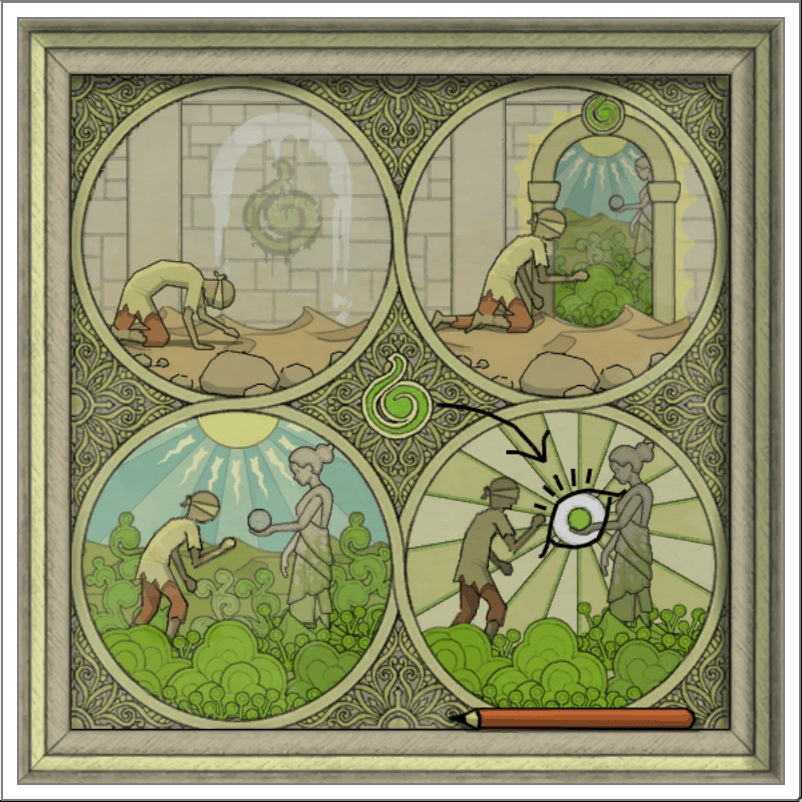
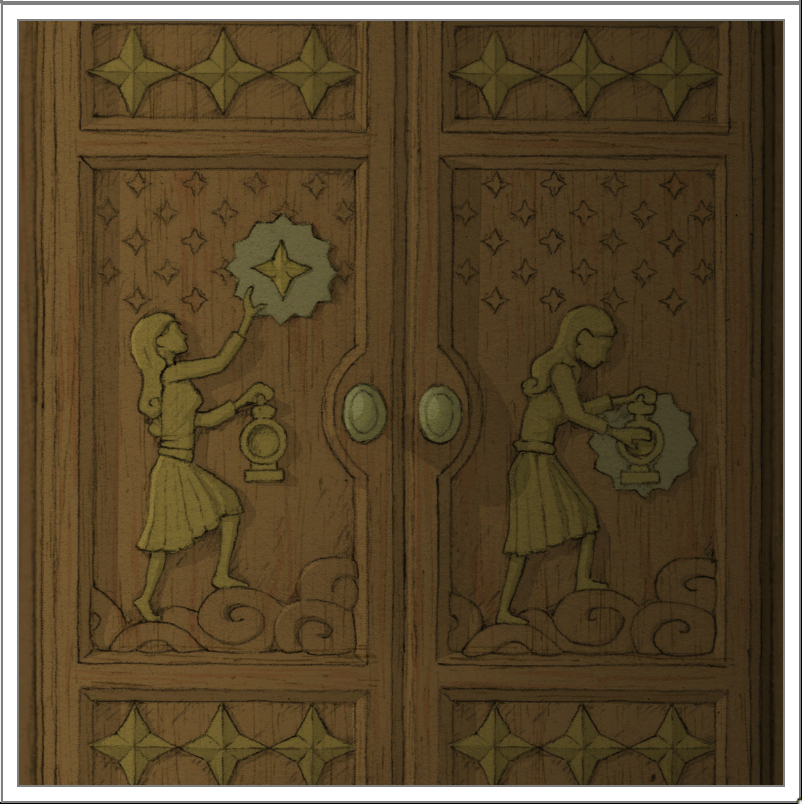
Here are the hints for the first three fruits. As the process of collecting fruits getting more and more complex, the latter collections also have hints on their sub-steps.
The designer gave an extremely straightforward hint for the first fruit (as can see how the first image is similar to the very first set of images in this post). The hint for the second fruit is not that straightforward, but still very obvious once the player sees the scenes. The third one is more obscure, just telling the player the basic idea.
This is a very smart decision because it follows the learning curve super well. Originally it’s very easy, so that the player develops the basic sense of mechanics. It’s growing more and more difficult, so that the player does not feel “too easy” and get bored. On the other hand, there are always hints for the player, so that the player would not feel “too difficult” neither.
What I think could be improved is the implementation. For example, when dealing with the clock, I didn’t know there’s a specific order to put the grid, so spent a lot of extra time on unnecessary trials. I think as long as the minute hand and the hour hand are at the correct position, the player should be able to put them together in any order.
Another thing I thought when playing is that, the gears are rotating too slowly. One of the gears even need to spin for 3 times to make the graph into the correct position. I think the time waiting for it is unnecessary. So maybe let the player control the gear is a better option.
In general, the first type of fun the designer intended is definitely sensation. The game is so artistic, that this goal is definitely met. Another type of fun is probably narrative. I think this goal is not completely met, because I didn’t start noticing the storyline until second time playing it, but once noticing, I feel amazed. The third type of fun is challenge. This is completely achieved by the puzzle design. Solving those puzzles (with the creative mechanics) is a huge plus to player experience.


